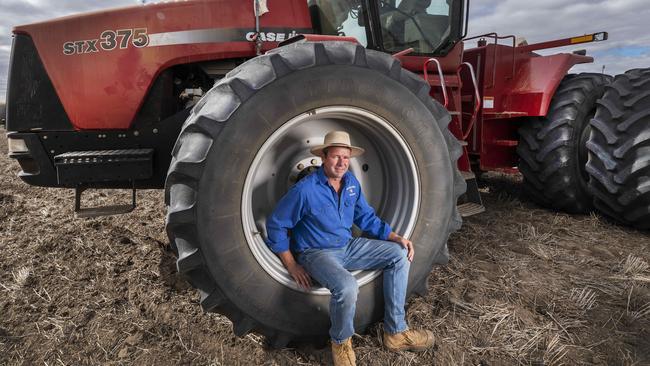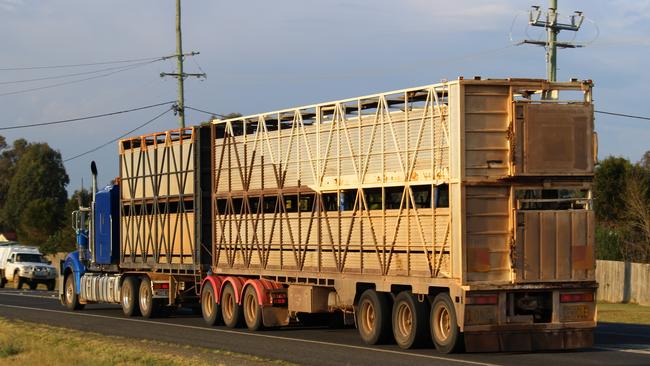Freight charges rise as cost of living bites
Freight charges have jumped almost 30 per cent for some producers now facing increasing challenges getting produce to market.

Australian producers are feeling the sting of rising costs to transport agricultural goods across the supply chain, with road freight charges jumping 30 per cent in some cases.
And landside fees at the nation’s ports are also increasing, with reports that transporters were charged $670 million of “incontestable” charges by stevedores in 2022, with costs cascading down the supply chain and fuelling inflationary pressures.
It’s enough to drive some producers to the edge, Victorian Farmers Federation horticultural group president Nathan Free said, as the recent collapse of Scott’s Refrigerated Logistics further squeezed the supply chain for fresh fruit and vegetable producers.
“I’ve been chatting to neighbours, who’ve said they don’t know what to do,” Mr Free said.
“At the end of the day, Scott’s has been hurt very badly, but it’s our producers that are going to be hurt the most. We can’t get our product to market.
“Farmers trying to pay the price of diesel to put product to market is tough.”
The latest ABARES data estimates producers will spend an $7.3 billion of fuel in 2022-23 – an increase from $6.2 billion in 2021-22 and almost double the $3.5 billion of 2020-21.
The road freight service price index – the marker against which road freight prices are set – also lifted 4.2 per cent to reach 117.3 points in 2021-22.
IBISWorld analyst Josh Triesman said inflated fuel costs, volatile crude oil prices, and Australia’s strong trade volumes were factors driving freight prices higher.
“While Australia relies on international shipping channels, road freight forms a key link in the supply chain to help firms reach end markets. If more trade volumes are coming into the country, or being exported, there is greater demand for road freight,” Mr Triesman said.
Though agriculture is on track to hit a record $90 billion value in 2022-23, the heavy price of spiralling on-farm input costs is expected to wipe $5.3 billion in the real net value of farm production nationally. ABARES data released in December predicted total farm costs would rise from the $62.9 billion recorded in 2021-22, to $66.3 billion in 2022-23.
Quambatook grain grower Brett Hosking said road freight costs jumped an estimated 20 to 30 per cent at the most recent grain harvest.

“I did hear of a grower in another part of Victoria, he was paying effectively double to get his grain from the paddock to the receiver. That’s an extreme example,” Mr Hosking said.
“The same cost of living pressure is affecting every Australian at the moment … it’s also affecting our transport operators, our farmers and everyone alike.”
In the livestock industry, a “perfect storm” of insurmountable costs is wreaking havoc for producers trying to get stock to markets.
Damaged roads and floods in recent months mean drivers are travelling vast distances out of their way rather than taking the most direct route.
Mechanics and transport owners have also reported a surge in trucks damaged by square-edged potholes and roadside debris, with repair costs being passed onto clients.
Tony Clough of Windermere at Junee in southern NSW estimated freight costs for livestock have increased 20 per cent in two years.

He said the cost of diesel, registration and insurance have all increased and were affecting agriculture.
Livestock and Rural Transporters Association of Victoria president Russell Borchard said every operator he spoke with faced challenges securing staff, with people even exiting the transport industry as a result.
“This truly is like a perfect storm,” he said.
“Everything is going up; in some cases, running costs are getting completely out of control.”
The cost of a new truck has increased by as much as $40,000, while the current wait for new trucks is stretching into 2025, resulting in older trucks on the road, with little new stock flowing to used truck markets.
Meanwhile, near record-high global freight spot prices exponentially increased retail prices for many on-farm inputs, with fertiliser import costs more than two-and-a-half times higher in 2022 than the preceding 10-year average, according to the ABS.
And while freight rates have softened in recent months, Freight and Trade Alliance director Paul Zalai warned that “welcome relief” may be temporary as shipping lines will look to again take control of the situation.
Any renewed rate increases would be compounded by increases of at least 30 per cent in some stevedores’ terminal landside fees in the first months of 2023.
That hike is on top of more than $670 million Mr Zalai said road and rail transport operators paid last year, with $442 million slugged for incontestable terminal access charges and a total of $232 million paid to return empty containers to shipping yards.
He said adding container detention and vehicle booking fees bumped the figure over a $1 billion paid in supply chain fees to stevedores each year for the past three years.
A recent Productivity Commission report also found inefficiencies, including industrial issues and infrastructure constraints, at Australia’s ports were costing the economy a further $600 million a year.
Freight forwarder EES Shipping managing director Brian Hack said a recent audit found 30 per cent of sailings were being blanked or delayed, disrupting export forward planning and triggering additional costs for regional and agriculture exporters moving freight by rail to ports.



